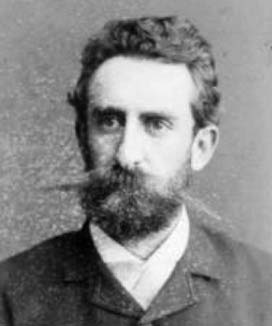


 تاريخ الرياضيات
تاريخ الرياضيات
 الرياضيات في الحضارات المختلفة
الرياضيات في الحضارات المختلفة 
 الرياضيات المتقطعة
الرياضيات المتقطعة
 الجبر
الجبر
 الهندسة
الهندسة 
 المعادلات التفاضلية و التكاملية
المعادلات التفاضلية و التكاملية 
 التحليل
التحليل
 علماء الرياضيات
علماء الرياضيات |
Read More
Date: 25-2-2017
Date: 20-2-2017
Date: 25-2-2017
|
Born: 18 July 1856 in Novara, Italy
Died: 8 February 1907 in Turin, Italy

Giacinto Morera, the son of a wealthy businessman, graduated in engineering and mathematics from the University of Turin in Italy, having attended the courses by Enrico D'Ovidio, Angelo Genocchi and Francesco Siacci. He considered Siacci to be not only his "teacher" in science and also his teacher about life. Morera extended his knowledge of mathematics, first at the University of Pavia in Italy under the direction of Eugenio Beltrami and Felice Casorati, then at the University of Pisa under the direction of Enrico Betti and Ulisse Dini, and finally in Leipzig with Adolph Meyer and Felix Klein.
He won the competition for the position of professor of rational mechanics at Genoa University, where he stayed and lived for fourteen years. At Genoa he was also professor of mathematical physics, became dean of the Faculty and rector of the University.
In 1900 he went to Turin University where he taught advanced and rational mechanics, both at the University and at the Polytechnic. There, as he had been in Genoa, he was appointed as dean of the Faculty of Science. He was member of the Academy of Sciences of Turin and of the Accademia dei Lincei.
Somigliana described Morera as a "correct and careful man", an "effective teacher", and wrote [1]:-
... it is not possible to argue that he was very creative; his brains were overall analytical and critical, so that he did not create new theories, but developed the ones which already existed [... his results consisted of] solutions to complicated and difficult problems.
Morera studied the fundamental problems which arise in dynamics with particular regard to the use of the Pfaff method applied to Jacobian systems of partial differential equations and to the problem of Lie transformations of the canonical equations of motion.
He developed the study of the harmonic functions, applying results due to Pizzetti, finding a simple expression for the inner and outer gravitational field of an ellipsoid, solving the Dirichlet problem. He was interested also in the Cauchy integral for the representation of functions of a complex variable, in the discontinuity of the differentials of the potential function and in the Gauss representation formula. Finally we note that he improved the proof of the Kirchhoff formula for the Huygens principle.
Articles:



|
|
|
|
لصحة القلب والأمعاء.. 8 أطعمة لا غنى عنها
|
|
|
|
|
|
|
حل سحري لخلايا البيروفسكايت الشمسية.. يرفع كفاءتها إلى 26%
|
|
|
|
|
|
|
قسم الشؤون الفكرية يقيم الحفل الختامي لمسابقة حفظ قصار السور للناشئة في أفريقيا
|
|
|